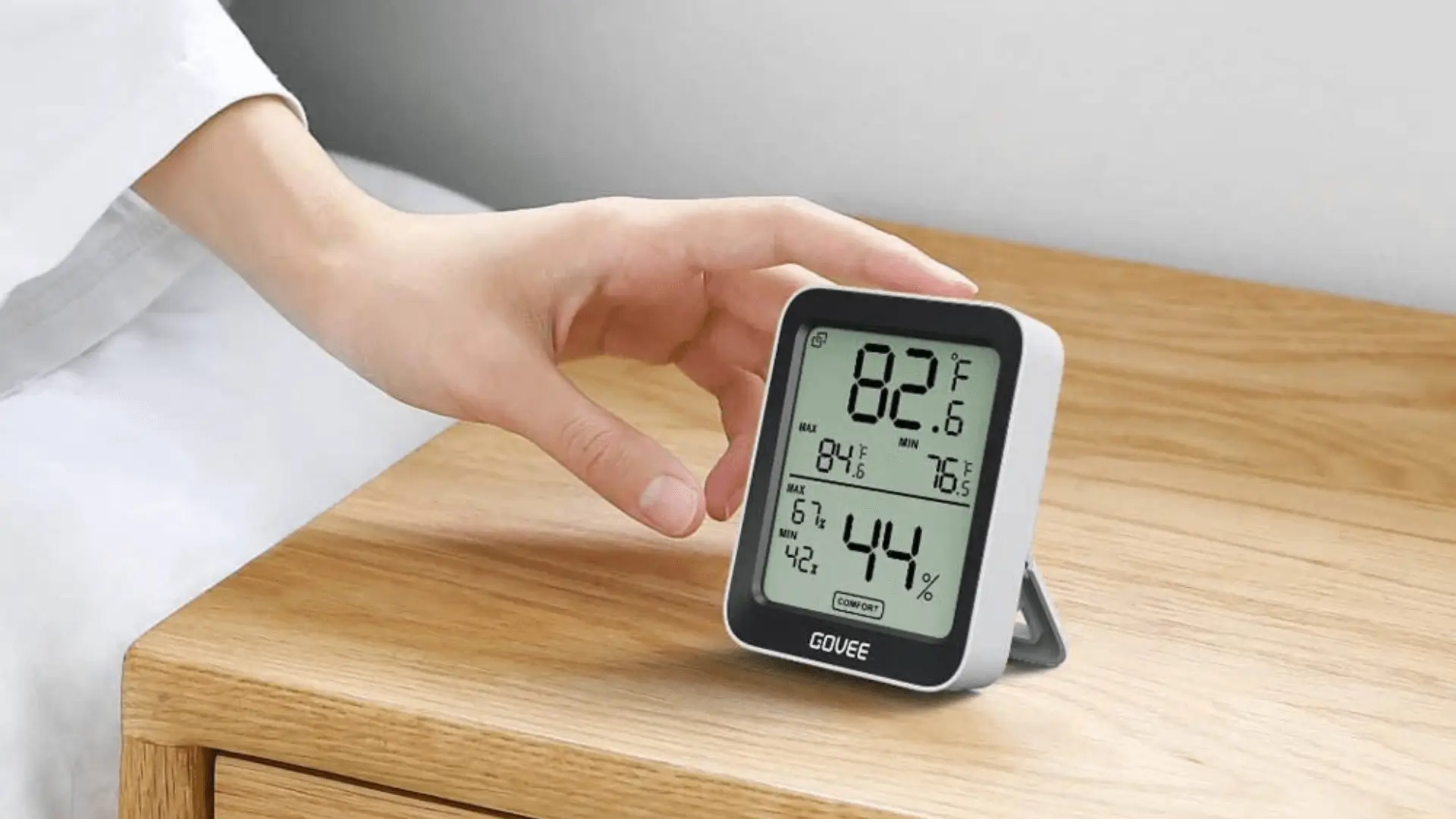Maintaining the right humidity level inside your home isn’t just about comfort — it directly affects your health, your home’s durability, and even how efficiently your HVAC system performs. Indoor humidity that stays too high or too low over time can trigger respiratory issues, worsen allergies, damage wood furniture, and create an environment where mold thrives.
So, what should the humidity level be in your home? Let’s break it down in the simplest, most practical way.
What Is the Ideal Humidity Level in a Home? (Quick Answer)
Most homes feel healthiest and most comfortable when indoor humidity stays between 30% and 50%. This range is widely supported by organizations like the EPA and ASHRAE (American Society of Heating, Refrigerating and Air-Conditioning Engineers).
Seasonal adjustments matter:
- Winter: 30–40% (prevents dry air without fogging windows)
- Summer: 40–50% (reduces mold and keeps your AC efficient)
Home size, insulation quality, climate, and ventilation also influence how stable your humidity stays throughout the day.
Why Healthy Indoor Humidity Levels Matter
Maintaining balanced humidity is essential for preventing respiratory issues, mold growth, and long-term home damage. If you want a deeper breakdown of why proper moisture levels matter, this guide explains why maintaining the proper humidity in your home is so important.
Health Effects
- Low humidity dries your skin, eyes, throat, and nasal passages.
- High humidity makes breathing heavier and worsens conditions like asthma.
- Dust mites and mold thrive in damp environments.
- Viruses spread more aggressively in extremely dry air.
Home Effects
- Low humidity cracks wood floors and furniture.
- High humidity leads to peeling paint, damp walls, musty smells, and window condensation.
- Both extremes strain heating and cooling systems, increasing energy bills.
In short: Balanced humidity = Healthier body + Healthier home.
Low Humidity: Symptoms, Causes & Risks
Dry indoor air is most common in winter, especially in colder regions where heating systems run constantly.
How You Can Tell Your Home Has Low Humidity
- Dry or itchy skin
- Scratchy throat or frequent coughing
- Cracking wooden furniture
- Static electricity shocks
- Increased respiratory infections
Why Low Humidity Happens
- Continuous heating
- Poor insulation
- Low outdoor temperatures
- Air leaks and drafts
Low humidity often increases dust circulation in the home. If you’re noticing unusual dust buildup, this article covers where all this dust might be coming from and how humidity plays a role.
High Humidity: Symptoms, Causes & Risks
High humidity is more common in the summer or in naturally damp areas like basements, bathrooms, coastal regions, or homes with poor ventilation.
Signs Your Home Has High Humidity
- Musty odors
- Mold spots on walls, ceilings, or windowsills
- Sticky or heavy indoor air
- Slow-drying clothes indoors
- Condensation on windows or pipes
Why High Humidity Happens
- Poor ventilation
- Daily activities like cooking, showering, drying clothes indoors
- Oversized or malfunctioning AC units
- Leaks or moisture intrusion
Excess humidity isn’t just uncomfortable — it directly increases mold growth, which can trigger allergies, respiratory issues, and chronic sinus problems.
How Much Humidity Is Good for Health?
While 30–50% is the general range, certain people benefit from tighter control:
Children: 40–50%
Older adults: 40–50%
Asthma/allergy sufferers: Preferably under 45%
Infants: Around 40–45% (helps breathing and sleep)
- High humidity + asthma = inflammation + harder breathing
- Low humidity + infants = dry airway irritation
Maintaining a balanced level becomes even more important in homes with vulnerable individuals. Humidity is just one factor in a healthy living environment. To understand the broader picture, explore this complete guide on improving your home’s indoor air quality.
How to Measure Humidity Indoors
You can’t control what you can’t measure.
Simple Ways to Check Humidity
- Digital hygrometer: Affordable, accurate, and can track multiple rooms.
- Smart thermostats: Many now display temperature + humidity in real time.
- Indoor sensors: Track moisture in basements, bathrooms, or near HVAC systems.
Humidity varies room to room, so don’t assume one reading represents the whole home.
How to Maintain a Healthy Humidity Level at Home
The good news? You don’t need expensive equipment to fix humidity problems — just consistent habits and a few smart adjustments.
If Your Humidity Is Too Low
- Use a room humidifier (especially in bedrooms)
- Add houseplants to increase natural moisture
- Put bowls of water near heat sources
- Seal gaps around doors and windows
- Avoid overheating your home
If Your Humidity Is Too High
- Run exhaust fans while cooking or showering
- Increase ventilation (even a 10-minute window crack helps)
- Fix plumbing leaks immediately
- Use a dehumidifier in damp areas
- Ensure your AC size matches your home — oversized units remove less moisture
Room-Specific Tips
Basement
- Keep dehumidifier running
- Fix foundation leaks
- Avoid carpet in moisture-prone areas
Bedroom
- Avoid drying clothes inside
- Maintain airflow around the bed
- Monitor humidity during sleep (levels often rise at night)
FAQs
What humidity level prevents mold?
Keeping humidity below 50% is the safest way to prevent mold growth.
What is a safe humidity level at night?
Aim for 40–50% for easy breathing and better sleep.
Can high humidity damage my home?
Yes — it can cause mold, wood rot, peeling paint, and condensation damage.
Conclusion
The healthiest indoor humidity level for most homes sits between 30% and 50%. Maintaining this range protects your health, helps your HVAC system run efficiently, and prevents long-term damage to your home. With regular monitoring, smart ventilation habits, and the right tools, keeping humidity balanced becomes easy and natural.
A comfortable home isn’t just about temperature – it’s about moisture balance that keeps your body and your space healthy year-round.









